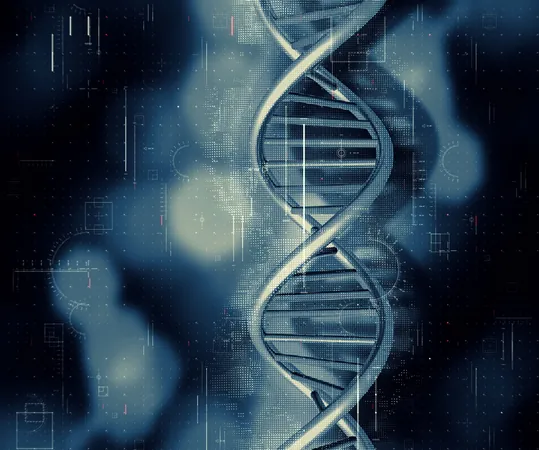
Unlocking the DNA Code: How Misinformation in Our Genes Shapes Our Health
2025-06-02
Author: Rajesh
The Hidden Language of DNA: What You Didn’t Know
In the intricate world of cellular biology, every second, molecular machines are hard at work deciphering the vast instruction manual that is our DNA. Among the most fascinating processes is DNA methylation, a chemical marking system that can designate specific portions of DNA as either 'do not read' or 'start here.' This vital regulation of gene expression has perplexed scientists, particularly when they noticed that certain areas of DNA known as CpG sites, when left unmarked by methylation, show increased gene activity.
The Genetic Puzzle: Are They Misinterpreting the Data?
A groundbreaking team of researchers from Iceland has posed a bold question: What if the patterns we see linking DNA methylation with gene activity are actually reflective of something deeper and more fundamental—mistakes in the DNA sequence itself, known as DNA variants? This inquiry could revolutionize how we understand genetic expression.
A Comprehensive Study: Millions of Data Points
To delve into this hypothesis, the team analyzed blood samples from 7,179 individuals, utilizing advanced nanopore sequencing technology that enabled them to capture both the DNA sequence and methylation statuses. This meticulous analysis helped them track inherited DNA variations and monitor how methylation varied across different genetic markers.
Mapping Unmethylated Zones: The Genetic Dimmer Switches
The researchers identified nearly 190,000 unmethylated regions within the DNA—areas where clusters of CpG sites displayed significant variation in methylation levels depending on the genetic sequence. They uncovered that 41% of these unmethylated zones were influenced by specific DNA sequence variants, which they termed allele-specific methylation quantitative trait loci (ASM-QTLs). Just a single-letter change in our DNA could determine whether a gene is turned on or off!
The Ripple Effect: From Methylation to Gene Expression
Further analysis revealed a compelling link between these unmethylated regions and gene activity. By sequencing RNA from 896 individuals to correlate with their DNA methylation data, they found that wherever an unmethylated zone affected gene expression, an ASM-QTL was invariably involved. This suggests these DNA variants actively manipulate methylation patterns and, in turn, gene activity.
The Cause of Change: Which Comes First?
Using robust statistical models, researchers were able to discern that it’s more likely methylation changes are influencing gene expression, rather than the reverse. This insight holds crucial implications for our understanding of gene regulation and disease.
Disease Links: The Hidden Danger in Your DNA
The implications of their findings are significant—many of the variants affecting methylation levels overlapped with regions previously connected to various human diseases, including type II diabetes and asthma. These ASM-QTLs were found to be over 23 times more likely to occur in proximity to these disease-related genes, particularly those tied to blood traits.
A Words of Caution: Interpreting DNA Connections
As they wrapped up their research, the Icelandic team urged caution in interpreting the relationships between DNA methylation and gene activity. A correlation does not imply causation, and the complexities of gene regulation are profound. They emphasized the power of long-read sequencing technologies like nanopore sequencing to unravel these intricate details.
Understanding the genetic landscape at this fine scale will illuminate areas of the genome previously labeled as 'junk DNA,' leading to exciting discoveries regarding our genetic makeup and health.

 Brasil (PT)
Brasil (PT)
 Canada (EN)
Canada (EN)
 Chile (ES)
Chile (ES)
 Česko (CS)
Česko (CS)
 대한민국 (KO)
대한민국 (KO)
 España (ES)
España (ES)
 France (FR)
France (FR)
 Hong Kong (EN)
Hong Kong (EN)
 Italia (IT)
Italia (IT)
 日本 (JA)
日本 (JA)
 Magyarország (HU)
Magyarország (HU)
 Norge (NO)
Norge (NO)
 Polska (PL)
Polska (PL)
 Schweiz (DE)
Schweiz (DE)
 Singapore (EN)
Singapore (EN)
 Sverige (SV)
Sverige (SV)
 Suomi (FI)
Suomi (FI)
 Türkiye (TR)
Türkiye (TR)
 الإمارات العربية المتحدة (AR)
الإمارات العربية المتحدة (AR)